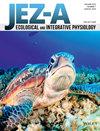Functional Morphology of the Tongue and Laryngeal Entrance and Scanning Electron Microscopic Pattern of the Filter Feeding Apparatus of Anas crecca
Abstract
There is insufficient information about the migratory Eurasian teal, Anas crecca. The study provides the first anatomical description of lingual adaptations and their relationship with the species-specific feeding behavior of A. crecca collected near Egyptian Lake Nasser. Our investigation was applied with the help of gross, scanning electron microscopy (SEM), and morphometric analysis. The study focused on the feeding filtering apparatus that depends on eight lingual papillae. The spatula-shaped nail is adapted for food particle pecking, while the lingual combs, rostral border of the prominence, unique papillary crest, median groove, and papillary system aid in intra-oral transportation. The feeding apparatus is formed by the lateral and dorsal papillary systems. The lateral papillary system had conical papillae with numerous long filiform and hair-like filiform papillae to constitute the food filtration apparatus, while the dorsal papillary system had ridged-like and rod-like papillae in addition to the small papillae of the papillary crest and spinated border of the root to help in moving the food particles with water to the lateral sides of the prominence. The laryngeal region exhibited papillary (pre-glottic) and non-papillary (glottic) areas. The papillary area had two lateral papillary portions and a median smooth portion, while the non-papillary area had an ovoid laryngeal mound with a median glottic opening that was bordered by a papillary border. The papillary portion had three slightly oblique longitudinal papillary rows.

 求助内容:
求助内容: 应助结果提醒方式:
应助结果提醒方式:


